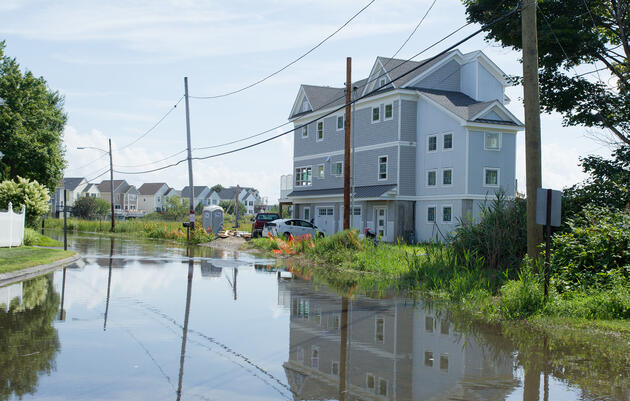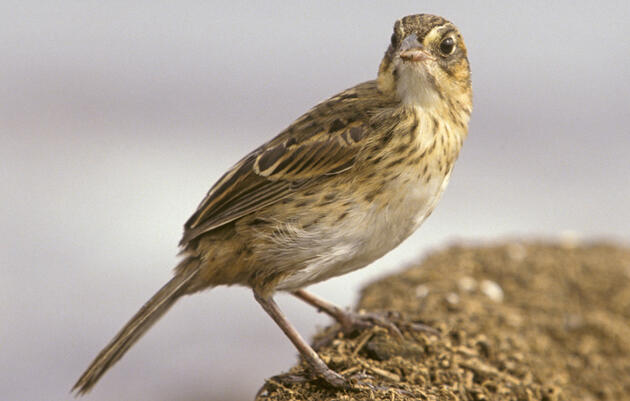March 18, 2021 – With only a few days until the official start of spring—a season marked by returning migrants and the excitement of nesting season—the marshlands of Great Meadows thaw and plant life begins to return.
Sadly, the habitat which Saltmarsh Sparrows need to nest successfully is degrading.
The disappearance of the Saltmarsh Sparrow is the driving force behind Audubon’s focus on coastal resilience. The rapidly declining population of this “canary on the coastline” tells us that we are losing essential ground.
The moment a female Saltmarsh Sparrow successfully nests in high marsh habitat, her eggs immediately enter a race against time. The most successful Saltmarsh Sparrow nests are those begun just after the high tides of the new moon, giving the eggs a chance to hatch before the arrival of the high tides of the next full moon just two weeks later (The Cornell Lab, All About Birds).
Bad timing, paired with rising sea levels, equals a flooded nest.
While we can’t control the tides, we can help restore the high marsh habitat that these birds and other wildlife need, while also helping coastal communities weather the impacts of climate change.

Together with Audubon New York, we have embarked on a study (funded by a National Fish and Wildlife Long Island Sound Futures Fund grant) to identify Long Island Sound area salt marsh sites primed for restoration.
Out of eight potential sites, two were identified as highest priority. Great Meadows Marsh (GMM), located on the southwestern Connecticut shoreline in the Town of Stratford, rose to the top because of its potential to serve as a demonstration of best practices in restoration, including creating and improving Saltmarsh Sparrow habitat and strengthening the area's resilience to sea-level rise. In New York, Sunken Meadow State Park was chosen.
This restoration project will address the problems of degraded salt marsh habitats caused by land use changes and development, disposal of dredged soils, invasive plant species, and climate-induced sea level rise that results in a reduction in species dependent on these habitats.
A significant focus of this project is the Saltmarsh Sparrow, which will be aided through the construction of soil hummocks (small, above-ground mounds) and plantings in degrading marsh areas in the vicinity of existing, known Saltmarsh Sparrow nesting sites.
GMM provides critical habitat for an array of wildlife species. The area includes the only remaining population of state-endangered marsh pink (Sabatia stellaris), supports Connecticut’s largest population of state-endangered diamondback terrapin (Malaclemys terrapin), and serves as breeding or feeding grounds for many species of finfish such as striped bass (Morone saxatalis), winter flounder (Pseudopleuronectes americanus), and bluefish.
Approximately 270 species of birds utilize GMM for nesting, overwintering, and stopover during migration, including many federal and state species of concern.
Stay tuned for updates as we take action to restore this very important ecosystem for birds and people.







